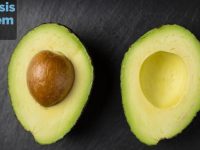Sugar is hotly debated. Even discounting carbophobic groups (like keto dieters), sugar is often considered unhealthy and not “worth” putting in your body compared to other sources of calories. Sugar is also demonized as being the foremost cause of poor health outcomes, with entire books written attempting to link sugar intake alone to diseases like cardiovascular disease, diabetes and cancer. In this light, there’s no truly “safe” amount.
On the other hand, from a biochemical perspective all carbohydrates are ultimately sugars, and it’s sugar in the form of glucose that powers our brain and body. Since no human could live very long without adequate blood glucose, it’s clear that sugar is not a menace in-and-of-itself because our body will go to great and complicated lengths to produce it if we do not supply adequate amounts. From this perspective, the harms of sugar are not linked to the six-carbon molecule itself, but to our overindulgence in that molecule (and other caloric molecules, as well).
From a strictly athletic perspective, sugar is the fastest, most consistent form of fuel; it’s digested and absorbed rapidly, allowing it to go almost straight to our working muscles. Thus, if your goals only extend as far as short-term performance, it’s hard to beat pure glucose, fructose, and sucrose.
The reality, of course, is that sugar is all of these things, context depending. In excessive amounts, it’s a menace to your health; biochemically, it’s ubiquitous and necessary; athletically, it’s the closest thing we have to rocket fuel. The challenge, then, is in balancing the costs and benefits of sugar in those contexts—something that neither a strict zero-sugar diet nor an ad libitum, eat-what-you-want diet can effectively serve. Guidelines are in order!
But first, a short look at the basic biochemistry of sugar:
Sugar Biochemistry, Briefly
All carbohydrates are broken down to sugars, and sugars are inherently important in biochemistry. Our DNA relies on the 5-carbon sugar ribose to form the backbone of the twisted helix (along with phosphate groups), but even beyond this fundamental role in making life possible, nearly all of life relies on the 6-carbon sugars glucose and (to a lesser extent) fructose as a source of energy. Glucose and fructose are also adapted for structural roles, such as with cellulose in plants and the glycosylated proteins in our cartilage, so these molecules really are everywhere.
In nature, however, most carbohydrates we come across aren’t simple sugars, but rather chains of sugars bound together via various linkages. The most important and abundant chains fuel-wise are amylose and amylopectin, which are both strings of glucose molecules that our digestive system can (and does) fully render into individual glucose molecules. A few foods also contain the simple disaccharide sucrose, which is composed of a glucose bound to a fructose, and sometimes contains small amounts of “free” sugars (meaning not bonded to anything else).
There are also chains that are nutritionally important but impossible for our digestive system to metabolize, which are collectively known as “fibers”. Fibers can be constructed of any combination of glucose and fructose, but the links used to bind the individual sugar molecules cannot be broken by our digestive enzymes and so these chains remain intact and impossible to absorb (and therefore “calorie-free”, though they do still technically contain calories). Most of these fibers will pass through us completely intact, unable to be broken down by either our own digestive enzymes or the bacteria that colonize our gut; these types of fiber also do not dissolve in water, and hence are known as “insoluble fiber”. There are also “soluble fibers” which can dissolve in water, and within this group of soluble fibers are the “fermentable fibers”, which can be consumed by the bacteria in our gut. All types of fiber serve a useful purpose, and none of them wind up being absorbed into the body as a carbohydrate.
To be absorbed from the digestive tract, a sugar must have been broken down into its basic molecule, whether that is a glucose, fructose, or galactose molecule. Once in our body, the fate of nearly all carbohydrates is to become glucose—galactose is transformed directly into glucose within the liver, while fructose must make an intermediary stop in the liver as liver glycogen. Glucose then fuels many other cells, and blood glucose level is an important biomarker for our health. Without sufficient carbohydrates in the diet, our body turns to inefficient systems for creating glucose from other molecules (neoglucogenesis), primarily amino acids.
Thus, the major difference in dietary carbohydrate sources is not what fuel they’ll supply us with—the answer is always glucose—but rather how fast that glucose will be supplied. The simpler and more refined the source, the faster and higher blood glucose rises; more complex and fibrous sources, on the other hand, are absorbed slowly and do not spike blood glucose. In most situations, we would rather have slower absorption for longer-lasting energy, but there are also times when our energy requirements are immediate and fast absorption is preferred.
The Official Guidelines on Sugar
Most developed countries have official nutritional guidelines on how much sugar a person should consume. These guidelines recommend a limited intake of added sugars, which should not be confused with sugars naturally found in foods like fruits. When found naturally in foods, sugars tend to be wrapped together with fiber, micronutrients, and water, making them far healthier and more difficult to consume in large amounts, and thus there is not generally a recommended upper intake for natural sugars. Do note, though, that the word “natural” should not be extended to more-or-less pure forms of sugar that happen to be found in nature, like honey or tree syrups; those are still considered added sugars.
Let’s look at a few of the guidelines various organizations have declared for sugar:
The AHA
The AHA recommends that men consume no more than 36 grams (about 150 calories) of added sugar and that women consume no more than 25 grams (about 100 calories) of added sugars.
The CDC
The CDC recommends limiting added sugar intake to less than 10% of total daily calories.
The WHO
The WHO recommends limiting added sugar intake to less than 10% of total daily calories with an additional clause stating that weak evidence suggests even further benefit by limiting added sugar intake to less than 5% of total calories.
The NHS
The NHS recommends limiting added sugar intake to no more than 30 grams of added sugars per day. They note that this is “roughly equivalent to seven sugar cubes”, which to my American ears is a charmingly esoteric way to measure sugar.
As you can see, most official guidelines are very similar. Even the ones that recommend hard limits (the AHA and NHS) would equal around 6-8% of daily calories for a typical adult man or woman, at least for a sedentary day. And, by and large, these guidelines are perfectly suitable for anyone on a sedentary day—limiting sugar intake to fewer than 10% of your calories on a sedentary day is a good idea long-term.
Sugar Guidelines for Athletes
The national guidelines do a fine job for most people, but as I’ve written before, athletes are a unique population and occasionally this means they need their own altered recommendations. For a runner who might lose 6 grams of sodium during a long jog in the hot sun, limiting yourself to the recommended 2.3 grams of sodium will lead to trouble down the line.
Is sugar in a similar situation? To answer this question, we need to understand the role of the guidelines in the first place.
For a sedentary human, added sugars are empty calories—they don’t provide nutrition beyond their caloric value. There are around a couple dozen essential vitamins and minerals that must be obtained from the diet on a regular basis; when diets shed nutritious foods for empty sugar calories, it can strain a person’s overall nutrition as they must get more nutrients from fewer foods. This is doubly true because foods with added sugars tend to replace healthier foods, so not only do they fail to provide nutrients, they also reduce the nutrients you’d get from elsewhere.
There is also evidence that diets higher in sugar can lead towards weight gain and obesity; however, by itself, added sugars do not have this effect and so the best we can really say is that diets high in sugar—unhealthy diets—are more common in unhealthy populations. The same is true for added fats (such as from chips, French fries, overly fatty meats, etc.), and in reality both added sugars and added fats work hand-in-hand to increase total caloric intake and lead towards weight gain. In the United States, where carbohydrate and added sugar consumption has increased in the past 40 years, there appears to be a clear link between sugar and obesity. In Australia, the opposite is true: added sugar intake has actually decreased, but obesity has still increased due to a marked increase in dietary fat consumption. The common link is calories, and it’s unfair to blame sugars, carbohydrates, fats, or any other nutrient.
There isn’t strong evidence that sugar causes any direct harm to a person, at least not in the way a truly toxic substance would. Outside of a few specific metabolic diseases, all of the ills associated with sugar are associated more strongly with excess calories, and sugar just happens to be the dominant source of those calories. Sugar does increase the risk of dental caries, though.
With all of this in mind, the reason a person should limit sugar intake can be summed up in three points:
- Getting adequate nutrition in a limited amount of calories.
- Avoiding weight gain through the addition of excess calories.
- Reducing the frequency of dental caries.
…and now we can look at how the standard guidelines may affect athletes.
The first point—getting adequate nutrition in a limited amount of calories—is still important for an athlete, but is also typically easier since athletes may consume 500-1,000 more calories on average in a normal day. The majority of micronutrients do not scale with caloric need, but stay static whether you require 1,500 calories per day or 4,000 calories. The micronutrients that do scale with caloric need (or which have increased requirements in athletes) typically scale to a lesser extent than caloric intake, meaning the overall nutrient density of your food can decrease without incurring nutritional harm.
(The one potential exception is vitamin B1 (thiamin), which scales directly with caloric intake, specifically carbohydrate intake as it is required for the metabolism of carbohydrates. That being said, thiamin deficiency is extremely uncommon in the developed world thanks to better access to diverse foods in general and fortification of starchy foods like bread. It’s unlikely thiamin deficiency will be a problem unless your diet already has holes that simply widen with further caloric intake!)
The second point—avoiding weight gain through the addition of empty calories—is of lesser concern to most athletes than it is to the general public. In fact, many athletes can struggle to get enough calories since our stomachs do not grow larger as our caloric needs increase! This isn’t to say it’s never a relevant point, but rather that it doesn’t affect athletes as much as sedentary individuals, and that a greater sugar intake is unlikely to cause the same sort of weight gain in an athlete.
Finally, we have the frequency of dental caries. Regardless of how much you train, sugar will never stop being cariogenic, and so this is still of concern. The frequency of dental caries also depends on numerous other factors, of course—including the rest of your diet, your overall dental hygiene, and the use of fluoride—so while you can certainly reduce the risk of dental caries by reducing sugar intake, it’s not the only (or even necessarily the most important) factor. It’s also not really nutrition-related, so in the end, the best I can say is that you’ll need to determine for yourself how important this is; some people are more prone to caries than others, and if you tend to get them, it may be worth reducing sugar intake.
Based on all this, we might say that the standard sugar guidelines aren’t as applicable for athletes as they are for others, and that athletes can safely bend them as long as they are meeting their nutritional requirements. Before we actually determine that, though, I think it’s worth looking at what an athlete’s diet might look like if we did apply them.
For example, if you go to the gym and train and climb for a couple hours, you might burn an additional 800 calories and wind up with a daily caloric target of 2,800 calories. Based on the standard guidelines, that means you should limit your sugar intake to about 70 grams per day. For such a short duration, there would be little need for performance-driven practices like sipping a sports drink to provide an additional 45-60 grams of carbs per hour (which would be more important for extended sessions where you are likely to run low on muscle glycogen)—and because of this, you could spread those 70 grams wherever you like. 70 grams of added sugar is a lot of sugar, and chances are you’ll stay below this on most days.
For a longer day of outdoor climbing with a hike in and out, you might drive your caloric needs to 4,000-6,000 total calories. With these caloric goals, it would be recommended to stay below 100-150 grams of added sugars. Again, this is easily done most of time—but there are performance and endurance reasons for why you might want to bring sugar-fortified sports drinks or other forms of rapidly absorbed energy. Even then, it would be fully possible both to gain the benefits of rapidly absorbed sugar and stay within the recommended limit by consuming other whole foods. You can even bring other, more nutritious but still relatively quickly absorbed sources like fruits and sweet potatoes to make it even easier.
So, the standard guidelines may not be critical for an athlete, but they’re also usually easy to follow nonetheless. Since you’ll never be steered wrong by increasing your total nutrition, I think it’s prudent to err on the side of increased dietary quality except in circumstances where there is a discernible benefit to rapidly absorbed carbs, such as competitions or redpoint attempts. These are not “normal” days, though; it will not affect your overall health or nutrition to eat for short-term performance instead of health on occasion.
Wrapping Up Sugar
Sometimes I write articles thinking they’ll go one way, but they end up going somewhere else. In this case, I approached the article assuming there would be some clear scenarios where athletes could benefit from ignoring the standard sugar guidelines. And perhaps there are, but they’re far more fringe than I would have thought, and it’s also clear that most athletes can use the standard guidelines with little issue.
To be sure, it is true that there is more leeway in the guidelines for the typical athlete than there is for a sedentary person. An office worker who goes to the gym a couple hours a week to blow off steam probably couldn’t power through a pound of sour patch kids and not experience some blowback, whereas a climber almost certainly could, especially if they’re using those gummies to stay fueled throughout a long, hard day at the crag. There are almost always better choices, though.
High-sugar foods are convenient, but don’t let their convenience stop you from planning ahead and getting more from your diet. You’ll never go wrong by analyzing where and when a sugary food will have the greatest impact; slow- and medium-digesting carbs (complex carbs) may not get you out of a tight spot energy-wise, but they’ll certainly prevent one from happening in the first place—and that’s worth quite a lot.















Thanks for the always informative articles. Interested in your take on the debate (FUD) around artificial sweeteners, and also if you have looked into rare sugars / D-Psicose as an alternative?
Metabolically, there’s no issue with artificial sweeteners, at least not the ones on the market today. Since they’re typically so much sweeter than sugar (often 100x or more), they’re consumed in extremely small amounts and our body is more than capable of excreting them. I’ve seen some research suggesting they could change the gut microbiome, but none of it is conclusive—and again, they’re consumed in such small amounts that it’s doubtful they’d have a major impact on our gut.
The main worry around non-nutritive sweeteners is how they may alter your taste desires. If most things you eat are sweet, whether from sugar or not, then you may slowly shift your preferences towards sweeter foods (just as happens with salt), and that could lead to worse diets in the long run. This isn’t a huge concern, and if you’re only consuming a minor amount day-to-day or week-to-week then it’d be surprising if it lead to any real change. Nonetheless, it is a potential concern.
Of course, artificial sweeteners and other non-nutritive sweeteners (like psicose) don’t provide calories, so from an athletic perspective they’re worthless. So, I don’t recommend them for use in any situation where the body would otherwise benefit from just adding carbohydrate calories, even if sugar is the only reasonable option.
Fantastic article, as ever. Thank you for writing it, I always feel a little a little more psyched for climbing after reading the articles here.
Thanks, I’m glad I can help!